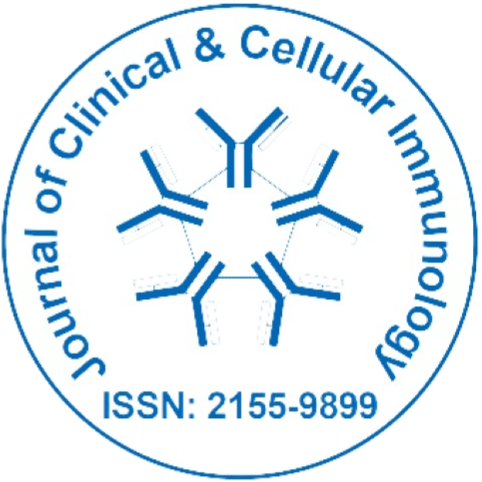
Journal of Clinical and Cellular Immunology
Open Access
ISSN: 2155-9899

ISSN: 2155-9899
Commentary - (2025)Volume 16, Issue 2
For decades, immunology has been guided by a clear and orderly classification system: T cells were either helper or cytotoxic, macrophages were M1 or M2, dendritic cells were either activating or tolerogenic, and so forth. This categorical framework has helped researchers decode the immune system’s complexity by reducing it to manageable, functional archetypes. Yet, in recent years, a growing body of evidence has begun to dismantle these rigid boundaries. Immune cells, it seems, are not defined by static identities but by a remarkable degree of functional plasticity — the ability to dynamically change their behavior, phenotype, and even core metabolic programs in response to environmental cues.
The shifting landscape of immune cell identity
Functional plasticity is not a new idea — it has been observed in various forms throughout immunology. Macrophages, for instance, have long been known to oscillate between proinflammatory and anti-inflammatory states depending on cytokine exposure. However, recent single-cell RNA sequencing technologies and high-dimensional flow cytometry have revealed a much more fluid continuum of states, with macrophages adopting hybrid phenotypes or transitioning dynamically in response to tissue-specific signals. In tumors, for example, macrophages may express both inflammatory and suppressive markers simultaneously, enabling them to promote tissue repair while dampening anti-tumor immunity.
T cells exhibit a similar versatility. CD4+ T helper cells were once neatly divided into Th1, Th2, Th17, and Treg subsets. But mounting evidence shows that these categories are not mutually exclusive. Th17 cells can acquire regulatory features; Tregs can adopt effector characteristics under inflammatory stress and “exhausted” T cells in chronic infection can regain partial function when inhibitory signaling is modulated. This phenotypic fluidity underscores that lineage commitment in immune cells is not irreversible — it is a dynamic equilibrium shaped by epigenetic remodeling and environmental feedback.
Dendritic cells (DCs), often viewed as the sentinels that bridge innate and adaptive immunity, also display functional adaptability. Tumor-associated DCs, for example, can switch from antigen-presenting to tolerogenic roles, contributing to immune escape. Similarly, in chronic infections, DCs may downregulate costimulatory molecules to limit tissue damage, trading immune activation for homeostatic balance.
This adaptability is not random — it represents a sophisticated evolutionary strategy. In complex and unpredictable environments, rigid immune programs could lead to inappropriate or self-destructive responses. Functional plasticity, therefore, allows the immune system to fine-tune its actions, balancing defense, tolerance, and repair in a tissue-specific and temporally dynamic manner.
Metabolism, epigenetics, and the new rules of immune reprogramming
At the heart of immune plasticity lies the interplay between metabolic and epigenetic reprogramming. These two layers act as the control circuitry that determines how immune cells respond to external cues. When macrophages encounter different metabolic environments — such as hypoxic tumor tissue versus oxygen-rich inflamed lung — they alter their energy pathways, shifting between glycolysis, oxidative phosphorylation, and fatty acid oxidation. These metabolic switches do more than supply energy — they actively shape gene expression patterns by modifying the availability of metabolites that influence histone acetylation and DNA methylation.
Similarly, epigenetic flexibility enables immune cells to “remember” past stimuli without committing irreversibly to a particular lineage. This concept, sometimes referred to as trained immunity, describes how innate immune cells such as monocytes or Natural Killer (NK) cells can mount enhanced responses upon re-exposure to a pathogen or inflammatory signal. Unlike adaptive memory, which relies on somatic recombination and clonal expansion, trained immunity is mediated through lasting changes in chromatin accessibility and metabolic programming.
Understanding this metabolic–epigenetic axis has opened new therapeutic avenues. By targeting metabolic checkpoints or chromatin modifiers, researchers can potentially reprogram immune responses — for instance, enhancing anti-tumor activity or dampening autoimmune inflammation.
The recognition of immune cell plasticity is reshaping the landscape of immunotherapy. In cancer treatment, for example, the failure of some checkpoint inhibitors may stem from the adaptive flexibility of immune cells within the tumor microenvironment. T cells and macrophages can rapidly adopt suppressive phenotypes under metabolic stress or exposure to tumor-derived cytokines, undermining therapy effectiveness. To overcome this, emerging strategies focus on reprogramming rather than merely activating immune cells — teaching them to resist suppressive cues or exploit metabolic niches more effectively.
In autoimmune diseases, where immune responses are misdirected against self, plasticity offers a double-edged sword. While it enables the immune system to recalibrate and restore tolerance, inappropriate or incomplete reprogramming may sustain chronic inflammation. Therapies that harness the immune system’s inherent flexibility — by promoting tolerogenic dendritic cells or regulatory T-cell phenotypes — hold promise for restoring balance without global immunosuppression.
Beyond therapy, immune plasticity is revolutionizing how we model disease. Traditional in vitro systems that use static cell lines or simplified cytokine cocktails fail to capture the dynamic feedback loops that shape immune behavior. The next generation of models — organoids, microfluidic “immune-on-a-chip” platforms, and computational simulations — are increasingly designed to incorporate the contextual variability that defines real immune responses.
The recognition of immune cell plasticity marks a paradigm shift from a deterministic to a context-dependent understanding of immunity. It compels us to think of immune responses not as rigid programs, but as flexible, adaptive networks that integrate metabolic, epigenetic, and environmental information. This complexity may seem daunting, but it offers a more realistic framework for understanding diseases where the immune system plays a central role from cancer and infection to neurodegeneration and aging.
Citation: Carlotta A (2025). Functional Plasticity of Immune Cells: Beyond Classical Pathways. J Clin Cell Immunol. 16:754
Received: 21-May-2025, Manuscript No. JCCI-25-38848 ; Editor assigned: 23-May-2025, Pre QC No. JCCI-25-38848 (PQ); Reviewed: 06-Jun-2025, QC No. JCCI-25-38848 ; Revised: 13-Jun-2025, Manuscript No. JCCI-25-38848 (R); Published: 20-Jun-2025 , DOI: 10.35248/2155-9899.25.16.754
Copyright: © 2025 Carlotta A. This is an open-access article distributed under the terms of the Creative Commons Attribution License, which permits unrestricted use, distribution, and reproduction in any medium, provided the original author and source are credited.